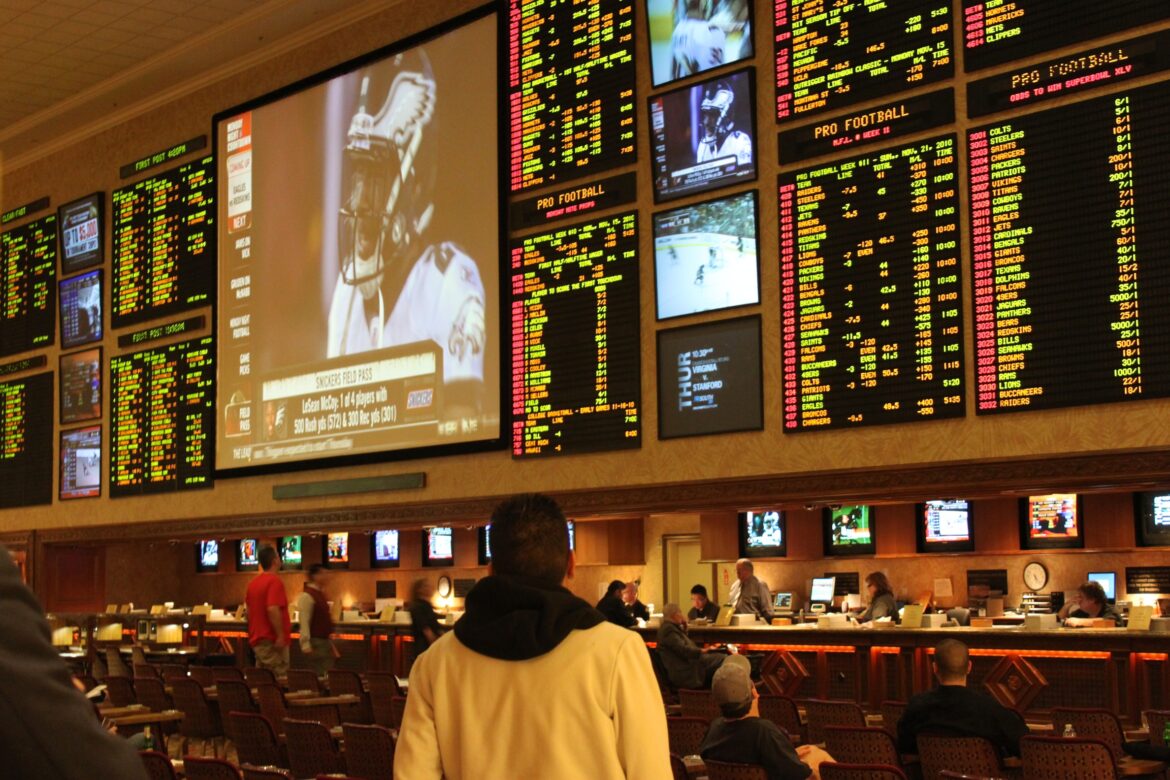In the sports betting world, the odds line refers to calculating the probability of something happening, be it who will win the championship, who will be the MVP, etc. It is basically the ratio between the amount put on stake by the betters based on the probability of the outcome.
Bookmakers set the odds by taking in all the previous data about a particular event or sport. They use mathematical tools and predictive analysis to develop the betting lines and odds. There are different betting lines and odds, such as money lines, point spread, etc. So, to get more details into the world of sports betting and odds, check out the guide below.
Also, if you are looking for a reliable betting site where you can easily get free bets and sign-up bonuses in addition to different betting offers, check out newbettingoffers.co.uk and have an amazing betting experience.
Now, let’s get started.
What Are Betting Odds?

Bookmakers establish betting odds, which is the amount a bettor must stake to win a specific amount if their bet succeeds. The bookmakers determine these odds on statistical data from sports and probability models. The betting lines are usually expressed as a money line, point spread, and total.
Point Spread – It is one of the most popular betting lines. It is the number of points given to an underdog to level up the matchup. In this way, one can get the betting action on both teams.
Moneyline – It is the odds for a particular team to win the match. The total is the combined score of both teams, where the bettors can bet on the final combined score. It can be under or over that total.
Apart from these, other betting options include:
Prop bets – It refers to the bettor’s bet on a team or individual players that are unrelated to the game’s outcome.
Futures Bets – In a futures bet, the better predict who will win the championship at the season’s end.
Parlays, Teasers and pleasers – Parlays combine two or more bets in a single wager. However, bettors can adjust the point spread to their advantage in teasers and pleasers. Most sportsbooks offer these betting lines and give players a broad range of choices.
History Of Setting The Betting Odds

In earlier times, the bests were made over the phone, and then the odds changed according to how much money was going to the favourite and underdog. So, to “make the book”, the oddsmakers or the bookmaker would put wagers on each possible result. In this way, they could balance out the wagers that might cost them a lot of money and make a profit.
These bets were recorded in a book, which was kept on the property before the game.
So, to compile their book, the bookmaker would give probability to each result. The probability will come up to 100 per cent. After that, to earn a profit, the bookmakers will introduce a 5–10% “juice” or “vig” to every ticket to get profit. In the 1950s, most bookmakers were using odds compilers.
Soon after, “power ratings” came into the picture to help bookmakers assess the respective dominance of sports teams and individuals. This helped in setting the prices easier and also helped the gamblers to find the value.
How do Bookmakers Set Odds And Betting Lines In The Modern Age?

As technology advances, bookmakers start using odd compilers; they also take the help of experts to formulate the market. Nowadays, bookmakers use information databases, crunching numbers to set the betting line. To accurately calculate the probability of the outcome, the bookmakers will examine several sports. After that, they adjust the price to include the vig, which helps them set the price.
These oddsmakers depend on advanced mathematics, computer algorithms, experience, and scientific formulas to determine the odds. Another critical tactic that they use is power ratings. Power rating is a statistical representation of each team’s strength and how each team is compared.
They focus on critical statistical considerations and categories such as strength, the margin of victory, etc.; when they compare the power rating of each team and crunch numbers, they get an estimate of what line they should put; for example, they can analyse the previous result of the home team and compare it with the form of the rival team. With the help of an odd compiler and mathematical models, they can set the odds and betting line in real time. The initial line is known as the opener or the opening line.
It depends on which team is taking in money; the bookmakers can move the line too. After the bookmakers know the market and which team is performing well, they will raise the limit and let the bigger bets. After the game has started, the full-game odds are not available. Full-game odds are among the most popular odds; however, sportsbooks also offer different odds, such as first-quarter and half odds, etc.
During halftime, the bookmakers release the second-half line. This depends on how the first half went. So, if any bettor wants to put on the bet for halftime, they must do it before the beginning of the second half. Sportsbooks also offer live betting and live-line, which they adjust according to how the game is going. This type of betting has grown in popularity over the years, and bettors are enjoying the live-betting. However, some sportsbooks use specialist companies that compile the odds for them, so there are chances that different platforms have identical odds. In this situation, a gambler must carefully pick the platform and find value.
Conclusion
Summing up, with so many bookmakers coming into the market and with the advent of online betting, the odds are becoming more standardised. The prices can be similar across different sportsbooks. The bookmakers will follow the market when it comes to calculating odds, so as a bettor, it is essential to opt for reliable sportsbooks. When picking one, look out for the value, free bets, enhanced odds, and several other offers.










